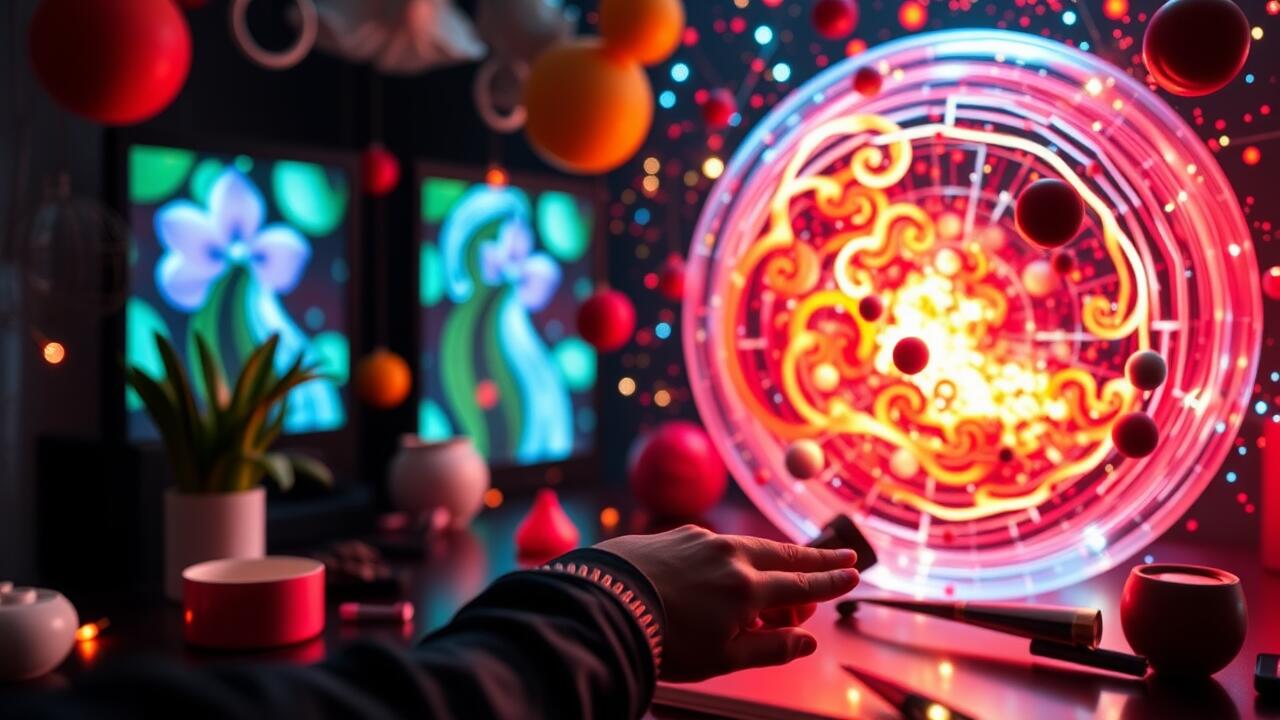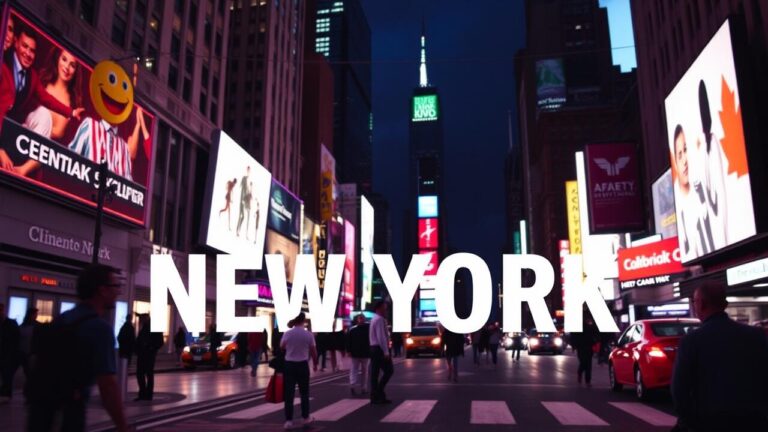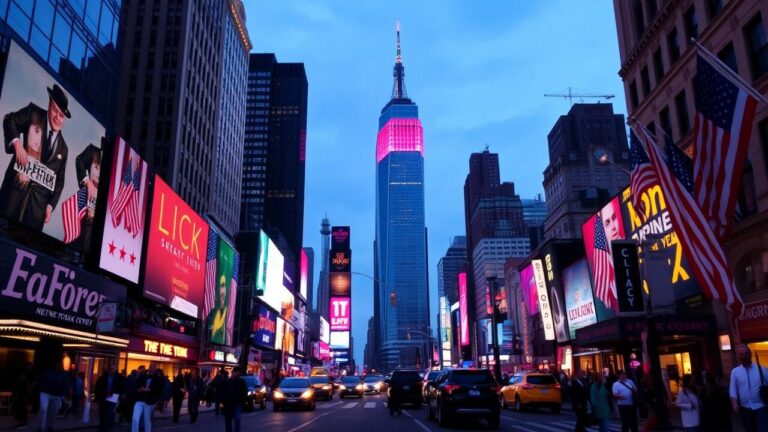Immersive Experiences: The Power of Digital Art in Engaging Audiences
Table Of Contents
Immersive Experiences: The Power Of Digital Art In Engaging Audiences | Exploring Immersive Experiences and the Power of Digital Art in Engaging Audiences
Key Takeaways
- Exploring the significance of captivating encounters in digital creativity and comprehending these engaging experiences.
- Assessing the influence of digital artistry on audience involvement and participation.
- Tracing the development of digital artistic methods and practices over time.
- Incorporating interactive elements into digital creativity to enhance user experience.
- Anticipating the forthcoming trends in digital artistry and its role in audience interaction.
- Investigating different types of engaging digital art experiences available today.
Immersive Experiences: The Power Of Digital Art In Engaging Audiences | Understanding Immersive Experiences in Digital Art
Immersive experiences are redefining how audiences engage with digital art, providing a dynamic platform where creativity meets technology. Digital artists utilize cutting-edge tools and multimedia techniques to create interactive art that captivates and resonates with viewers. This evolving landscape encompasses various forms of new media art, allowing visual artists to experiment with virtual art concepts that challenge traditional boundaries. Contemporary artists and united visual artists are at the forefront of this shift, exploring how digital content can forge deeper emotional connections through immersive experiences. As these trends continue to grow, the impact of digital art on audience engagement becomes increasingly significant, inviting more people into a world where art is not just seen but experienced in profound, transformative ways.
| Artist | Project Title | Medium | Engagement Type | Year |
|---|---|---|---|---|
| Refik Anadol | Infinity Room | Projection Mapping | Interactive Installation | 2020 |
| TeamLab | Borderless | Digital Installation | Immersive Experience | 2018 |
| Olafur Eliasson | Weather Project | Light & Space | Site-Specific Installation | 2003 |
| Jenny Holzer | Blue Purple Tilt | LED Art | Public Engagement | 2007 |
| Marshmallow Laser Feast | In The Eyes of the Animal | Virtual Reality | VR Experience | 2015 |
Immersive Experiences: The Power of Digital Art in Engaging Audiences | Defining Immersive Art Experiences
Immersive art experiences have redefined the landscape of engagement within the realms of modern art and entertainment. By leveraging immersive technology, artists create participatory art that invites audiences to become active participants rather than passive observers. This shift transforms traditional art exhibitions into dynamic environments where storytelling and interaction intertwine, allowing visitors to experience works of art in deeply personal and transformative ways. The digital age has paved the way for these innovations, making it essential for art to evolve with the expectations and desires of contemporary audiences.
The concept of immersive experiences in digital art embodies a blend of visual art and interactive elements that captivate spectators. Engaging narratives and striking visuals combine to establish a multi-sensory environment, immersing viewers in the creative process. This growing trend highlights the significance of audience involvement in art, pushing the boundaries of how art is perceived and appreciated. As immersive experiences continue to gain traction, they forge new paths for artists to connect with wider audiences and explore uncharted territories in the arts.
The Role of Interactive Art Experiences
Interactive art experiences transform the way audiences engage with artwork. Artists leverage immersive technologies, such as digital projectors, to create dynamic exhibitions that captivate viewers. An example is “Van Gogh: The Immersive Experience,” which allows participants to step into the artist’s world, fostering a deeper understanding of his creativity. This engagement encourages creative thinking, igniting the imagination of visitors, especially those who identify as digital-native.
Art galleries have increasingly adopted interactive elements to enhance audience participation. These immersive experiences showcase the power of digital art in engaging audiences in novel ways. By allowing participants to interact with the artwork, artists create a dialogue that fosters profound emotional connections. This approach not only amplifies the reach of each exhibition but also cultivates a community that appreciates the transformative potential of creativity in the digital age.
The Impact of Digital Art on Audience Engagement
Digital art significantly enhances audience engagement through immersive experiences, exemplified by popular installations like the Van Gogh immersive experience. These captivating artworks utilize innovative digital projection techniques that transform traditional art museums, such as the Museum of Modern Art, into dynamic spaces filled with sound and visuals. The integration of digital audio amplifies the sensory experience, drawing viewers deeper into the creative process of the artists. Augmented reality further augments these experiences, allowing audiences to interact with art installations in ways that were previously unimaginable. By leveraging emerging technologies, digital artists create compelling environments that foster a profound connection between the viewer and the artwork, underscoring the power of digital art in captivating audiences.
How Digital Artists Create Captivating Works
Digital artists harness various techniques to create captivating works that resonate deeply with audiences. These creators often employ immersive experiences, tapping into the psychological aspects of artistic expression. By integrating elements like psychedelic art or evocative narratives, they enhance the overall impact of their digital art experiences. Engaging viewers through social media platforms allows for immediate interaction, bringing immersive art experiences to a wider audience and amplifying the power of digital art in engaging audiences.
Engaging storytelling plays a crucial role in the captivating nature of digital art experiences. Artists frequently blend visuals with sound and interactivity to craft immersive entertainment art that invites viewers to participate actively. As audiences navigate these layered narratives, the immersive experiences deepen their connection to the art. By strategically using technology and creativity, digital artists are redefining what it means to engage an audience, showcasing how immersive experiences: the power of digital art in engaging audiences can transform perception and interaction.
- Emphasize the importance of color theory to evoke emotions in viewers.
- Utilize storytelling techniques to create a narrative arc within the artwork.
- Experiment with different digital tools and software to expand creative possibilities.
- Incorporate audience feedback to refine and evolve artistic projects.
- Foster collaboration with other artists to blend unique perspectives and techniques.
- Leverage emerging technologies, such as virtual reality and augmented reality, to enhance immersion.
- Share works on multiple platforms to reach diverse audiences and stimulate discussion.
The Emotional Connection in Immersive Art
Immersive art experiences create profound emotional connections that resonate deeply with audiences. Through the use of technology and innovative design, interactive art experiences allow participants to engage with digital experiences on a personal level. This makes the relationship between the viewer and the artwork not just visual, but deeply emotional, transforming traditional art experiences into dynamic dialogues. The power of digital art in engaging audiences lies in this ability to evoke feelings, encouraging introspection and personal reflection.
Emotions play a crucial role in shaping the impact of immersive arts. The interplay between the audience and the immersive environment fosters a unique atmosphere where feelings can thrive. Participatory art experiences invite viewers to become part of the narrative, enhancing their emotional investment in the work. As audiences delve into these digital immersive worlds, they often find themselves exploring themes of identity, memory, and connection, reinforcing the significance of immersive experiences in the art landscape.
The Evolution of Digital Art Techniques
The landscape of digital art has transformed remarkably, fueled by the rise of technology and innovative techniques that enhance immersive experiences. Immersive artists leverage digital tools to craft amazing art experiences that actively engage audiences, drawing them into a world of imaginative art experiences. This shift towards immersive storytelling allows for a deeper emotional connection with the audience, particularly through immersive art displays and exhibits that resonate on multiple levels. As digital-based immersive art continues to evolve, digital art spaces are becoming dynamic environments where interaction and creativity flourish, setting the stage for a new era of engagement in the realm of digital art.
Advanced Technologies Shaping Digital Art
Advanced technologies have revolutionized the landscape of digital art, significantly enhancing immersive experiences. Artists harness tools such as virtual reality and augmented reality to create immersive art installations that captivate audiences. These advancements transform traditional art forms into interactive art exhibitions, allowing visitors to engage directly with creative storytelling in a digital world. Such interactive experiences deepen the connection between viewers and the artwork, exemplifying Immersive Experiences: The Power of Digital Art in Engaging Audiences.
The rise of artificial intelligence and advanced software has also played a crucial role in shaping the future of digital art. Artists can now produce intricate digital recreations and dynamic interactive art forms that rise to new levels of artful storytelling. Digital art museums have embraced these technologies, showcasing interactive art installations that challenge the conventional boundaries of artistic expression. Such immersive art exhibitions invite audiences to participate actively, underscoring the profound impact of technology on contemporary art practices.
- The use of AI tools allows artists to experiment with new styles and techniques, expanding their creative possibilities.
- Virtual reality platforms enable users to step inside a piece of art, offering a unique perspective and interaction.
- Augmented reality features can transform a physical space, adding layers of digital content to real-world artworks.
- 3D printing technology lets digital artists create tangible pieces from their online designs.
- Advanced software programs provide artists with enhanced capabilities for manipulating images and creating complex animations.
- Digital collaboration tools allow artists from all over the world to co-create art in real time.
- The integration of blockchain technology offers new ways for digital artists to sell and authenticate their work.
Notable Trends in Immersive Digital Art
Current trends in immersive digital art emphasize the creation of inclusive digital experiences designed to capture audiences through innovative approaches. Interactive art exhibits are becoming more common, allowing visitors to engage with the artwork in ways that transform passive viewing into active participation. This shift towards interactive art environments not only enhances engagement but also fosters a sense of community among participants, making art more approachable and relatable.
Technology-powered storytelling plays a pivotal role in shaping these trends, enabling artists to create immersive art destinations that transport audiences into fantastical realms. Digital interpretations of traditional narratives now flourish through interactive encounters, where viewers influence the outcome as they navigate through the story. These technology-driven storytelling methods promise to redefine the landscape of immersive experiences, solidifying their importance in the future of digital art.
Integrating Interactivity in Digital Art
The integration of interactivity in digital art has transformed the way audiences engage with immersive artworks. This approach allows art enthusiasts to become active participants, creating digital responses that enhance their unique art experience. By incorporating elements of immersive experience design, artists craft theatrical experiences that resonate emotionally with viewers. As a result, popular immersive events and virtual art exhibits have emerged, showcasing the dynamic nature of experiential art. Through the use of advanced digital technology, creators can deepen the connection between the audience and the art, making each immersive experience more memorable and impactful. Immersive Experiences: The Power of Digital Art in Engaging Audiences continues to evolve, inviting greater interaction and engagement in the art world.
Tools and Platforms for Interactive Art Experiences
Tools and platforms designed for interactive art experiences play a crucial role in shaping the modern art consumption landscape. Innovations like virtual reality and augmented reality create immersive narratives that captivate viewers and foster deeper engagement. Artists utilize these technologies to transform traditional galleries into experiential art galleries, encouraging participation rather than passive observation. This evolution is a reflection of the growing demand for a more immersive event experience, where audiences can explore and contribute to the art culture through meaningful interaction.
The rise of innovative mixed-reality art has expanded the possibilities for creating engaging experiences. These interactive art environments allow viewers to become co-creators, enhancing the immersive experience and driving emotional connections with the artwork. As artists leverage tools that facilitate these interactions, immersive experiences gain traction in contemporary art scenes. The intersection of technology and creativity continues to redefine the landscape, proving that immersive experiences are indeed powerful tools for engaging audiences in the evolving world of digital art.
Case Studies of Successful Interactive Art Installations
Successful interactive art installations often harness multimedia technology to create immersive-experience works that captivate audiences. These incredible art productions enable viewers to engage deeply with art collectives and communicate with the artists behind the pieces. By blending various artistic mediums, such installations transform the traditional art world, inviting participants to become part of a diverse art experience that goes beyond passive observation.
Various projects exemplify the impact of immersive experiences on audience interaction. These entertainment projects often utilize cutting-edge technologies, allowing visitors to explore an evolving narrative or environment tailored to their actions. The resulting connections foster a profound art feel, encouraging audiences to immerse themselves in the art and sparking conversations about the future of digital art in engaging audiences.
| Installation Name | Artist/Collective | Location | Year Launched |
|---|---|---|---|
| TeamLab Borderless | teamLab | Tokyo, Japan | 2018 |
| The Obliteration Room | Yayoi Kusama | Queensland, Australia | 2017 |
| Field of Light | Bruce Munro | Ayers Rock, Australia | 2016 |
| Portals | Random International | London, UK | 2020 |
| Can You Hear Me? | Ryoichi Kurokawa | Berlin, Germany | 2019 |
The Future of Digital Art and Audience Engagement
Emerging trends suggest that the artistic community will play a crucial role in shaping the future landscape of engaging audiences through immersive experiences. Talented artists are increasingly using digital realms to create artistic fantasy worlds, inviting viewers to participate in their visions. Interactive galleries and immersive exhibitions are set to redefine traditional art venues, like psychedelic art galleries, blending entertainment with artistic exploration. As creatives harness advanced technologies, their ability to captivate audiences will grow, fostering a deeper emotional connection. Immersive Experiences: The Power of Digital Art in Engaging Audiences continues to evolve, where the intersection of art and community leads to innovative experiences that challenge perceptions and ignite imaginations.
Predictions for the Next Wave of Immersive Experiences
The future of immersive experiences in digital art promises a significant shift as technology continues to evolve. Innovative art forms will emerge, allowing artists to push boundaries and redefine how audiences engage with artwork. As experiential art spreads, venues will incorporate more interactive installations, offering a platform for creative talent to showcase their work. This transformation will enhance the art industry, fostering a deeper connection between audiences and the digital space.
Creative experimentation will be at the forefront, guiding artists to explore new mediums and methods for audience interaction. The rise of technology-driven artworks will reshape traditional perceptions of art, making immersive marketing transforms pivotal in attracting diverse audiences. As immersive experiences gain prominence, the art landscape will adapt, encouraging collaboration and innovation among artists, curators, and technologists alike.
The Role of Community in Shaping Digital Art Trends
The influence of community on digital art trends is profound, driving the evolution of immersive experiences that captivate audiences. Artist collectives play a pivotal role in this movement, uniting creators to explore and produce innovative visual experiences. With the rise of virtual exhibit attendees, they can showcase immersive content that engages a diverse audience. These collaborations often result in state-of-the-art technology being harnessed to craft dynamic installations, which transform artist studios into collaborative hubs, enriching the overall art scene.
Community feedback and participation are essential in shaping the direction of digital art trends. Renowned artists often rely on input from engaged audiences to refine their work and create more compelling interactions. In entertainment complexes, the integration of immersive experiences enables visitors to become active participants rather than mere observers. This shift fosters a deeper level of audience engagement, allowing creators to continuously adapt their artistic practices to meet the evolving desires of their communities.
Exploring Various Forms of Immersive Digital Art
Immersive Experiences: The Power of Digital Art in Engaging Audiences encompasses a variety of innovative formats, allowing artists to create compelling narrative experiences that captivate viewers. Original digital-projection creations serve as a cornerstone in this realm, providing immersive design that draws audiences into new worlds. By utilizing technology-based experiences, creative producers can inspire creativity and foster engagement through immersive shows that merge art with digital innovation. Exhibition spaces transformed into immersive studios can attract new audiences, offering them a chance to interact with art in ways that transcend traditional viewing. The potential of immersive experiences continues to grow, redefining how digital art connects with its audience.
Virtual Reality as a Medium for Immersive Experiences
Virtual reality serves as a groundbreaking medium for immersive experiences, greatly enhancing the way art engages audiences. Canonical artists have embraced this technology to create virtual experiences that allow viewers to step inside new exhibitions, providing avenues for personal exploration and creative inspiration. This shift towards virtual reality has transformed entertainment venues into immersive attractions where audiences feel emotionally connected to the artwork.
Through immersive exploration, artists craft environments that captivate the senses and invite participation. Famous artists utilize virtual reality to push the boundaries of traditional art, enabling viewers to interact with their creations in unprecedented ways. As audiences engage more deeply with art, they discover their own creativity, making each virtual experience unique and transformative. Immersive experiences illustrate the power of digital art in engaging audiences on a profound level.
Augmented Reality and Its Influence on Audience Interaction
Augmented reality (AR) transforms the way audiences interact with artworks, blending the digital realm seamlessly with the physical world. This technology enhances traditional art exhibitions by allowing viewers to engage with computer-programmed artworks in real time. Creative ways to implement AR provide immersive experiences that captivate a digital-native generation, making art more accessible and engaging. The theatricality of AR creates an atmosphere that invites exploration, drawing viewers into a deeper connection with the artwork presented in an experiential art museum setting.
The role of an immersive experience developer is crucial in harnessing AR to craft unique interactions between the viewer and the art. As technology-driven art institutes continue to embrace this medium, the potential for innovative experiences grows exponentially. By integrating AR into their offerings, these institutions not only enhance the viewer’s journey through the artwork but also foster a new appreciation for the digital landscape of art. This evolution reflects the broader narrative of Immersive Experiences: The Power of Digital Art in Engaging Audiences, emphasizing the ongoing shift toward interactive and participatory art forms.
Conclusion
Immersive Experiences: The Power of Digital Art in Engaging Audiences showcases how technology transcends the boundaries of traditional art galleries, inviting viewers into new realms of creativity. Through the use of digital projections, artists create environments that spark interaction and emotional resonance, transforming passive viewing into active participation. This evolution not only enhances the appreciation of art but also redefines the audience’s role in the artistic narrative. As immersive experiences continue to develop, they promise to further enrich our cultural landscape and redefine how art is experienced and understood.
FAQS
How do immersive experiences in an art gallery change the way the audience feels about traditional art gallery settings?
Immersive experiences in an experiential art gallery allow visitors to engage with artwork—in a way that enhances their understanding of the artistic vision behind each piece. These immersive productions transform the entertainment landscape by creating psychedelic art gallery environments that communicate artists’ intentions more vividly. As a result, the audience feels a deeper connection to the creative processes and can appreciate experiential art installations more profoundly than in a traditional art gallery.
How can immersive experiences transform how the audience interacts with digital art installations?
Immersive experiences can significantly enhance the audience’s interaction with digital art installations by making them feel more involved and engaged, thus creating a memorable impact that is often lacking in traditional art settings.
What are the benefits of immersive experiences for engaging the audience in digital art?
Immersive experiences enhance the audience’s engagement by providing them with a deeper connection to the digital art. These experiences allow the audience to interact more dynamically with the artwork, creating a more memorable and impactful encounter.
How does the concept of immersive experiences impact the audience’s perception of digital art?
Immersive experiences enhance the audience’s perception of digital art by providing interactive and sensory-rich environments that deepen engagement. Such experiences can lead to more profound emotional connections and a greater appreciation of the art being presented.
How do immersive experiences influence the engagement level of the audience in digital art showcases?
Immersive experiences significantly enhance the audience’s engagement level in digital art showcases by creating interactive environments that encourage exploration and participation. This unique approach captivates the audience’s attention, allowing them to connect more deeply with the digital art.
What role do immersive experiences play in enhancing the connection between the audience and digital art?
Immersive experiences significantly enhance the connection between the audience and digital art by creating interactive environments that captivate viewers and draw them into the artwork. This deeper engagement helps foster a stronger emotional response, allowing the audience to connect with the themes and messages presented in the digital art.
How can immersive experiences create a deeper emotional connection for the audience in digital art presentations?
Immersive experiences have the power to engage the audience on a much deeper level, allowing them to feel more connected to the digital art presented. By creating a multi-sensory environment, these experiences enhance the audience’s overall emotional response and engagement with the artwork.
In what ways can an immersive experience enhance the overall experience of the audience when viewing digital art?
An immersive experience can significantly enhance the audience’s overall enjoyment and understanding of digital art by allowing them to engage with the artwork in a more interactive and meaningful manner. This approach fosters a deeper connection between the audience and the art, transforming their interaction and encouraging them to explore the nuances of the digital medium.
How do immersive experiences enhance the overall engagement of the audience in digital art presentations?
Immersive experiences play a significant role in enhancing the engagement of the audience in digital art presentations by providing interactive elements and immersive environments that captivate viewers’ attention and foster a deeper connection with the content.
What is the significance of an immersive experience in attracting a wider audience to digital art events?
An immersive experience is significant because it captivates the audience, drawing them into the artwork in a way that traditional presentations cannot. This engagement not only enhances the emotional connection but also attracts a broader audience who may not typically attend digital art events.







